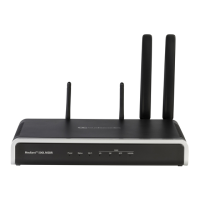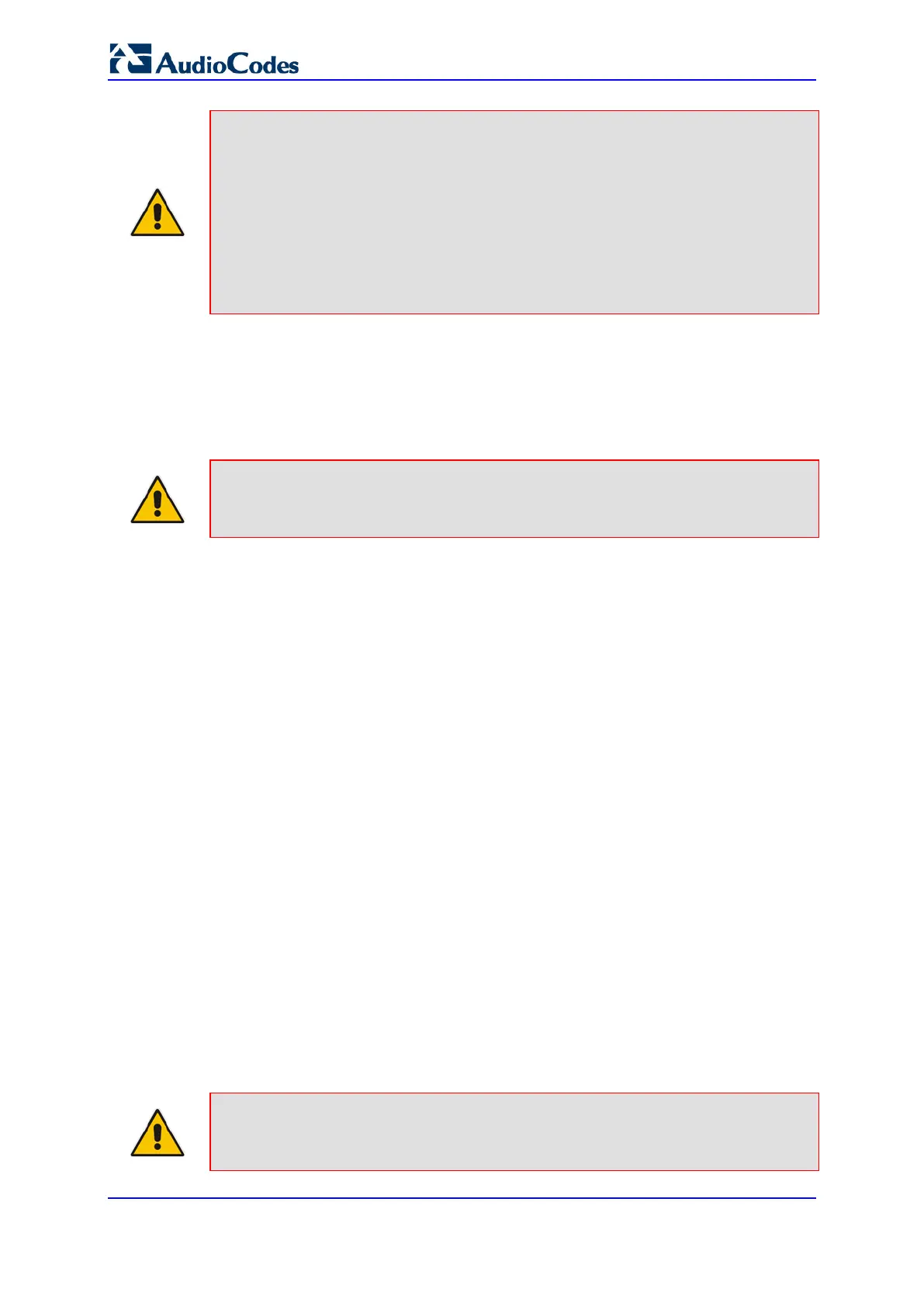User's Manual 616 Document #: LTRT-10466
Mediant 500L MSBR
Notes:
• You can schedule automatic loading of updated auxiliary files using HTTP/HTTPS.
For more information on automatic updates, see Automatic Update Mechanism.
• When loading an ini file using this Web page, parameters that are excluded from
the loaded ini file retain their current settings (incremental).
• Saving an auxiliary file to flash memory may disrupt traffic on the device. To avoid
this, disable all traffic on the device by performing a graceful lock as described in
''Locking and Unlocking the Device'' on page 605.
• For deleting auxiliary files, see ''Viewing Device Information'' on page 679.
The following procedure describes how to load Auxiliary files using the Web interface.
To load auxiliary files to the device using the Web interface:
1. Open the Load Auxiliary Files page (Maintenance tab > Software Update menu >
Load Auxiliary Files).
Note: The appearance of certain file load fields depends on the installed Software
License Key.
2. Click the Browse button corresponding to the file type that you want to load, navigate
to the folder in which the file is located, and then click Open; the name and path of the
file appear in the field next to the Browse button.
3. Click the Load File button corresponding to the file you want to load.
4. Repeat steps 2 through 3 for each file you want to load.
5. Save the loaded auxiliary files to flash memory, see ''Saving Configuration'' on page
606 and reset the device (if you have loaded a Call Progress Tones file), see
''Resetting the Device'' on page 603.
46.1.1 Call Progress Tones File
The Call Progress Tones (CPT) and Distinctive Ringing (for analog interfaces only)
auxiliary file includes the definitions of the CPT (levels and frequencies) that are detected /
generated by the device.
The CPT for analog interfaces is comprised of two sections:
The first section contains the definitions of the Call Progress Tones (levels and
frequencies) that are detected/generated by the device.
The second section contains the characteristics of the Distinctive Ringing signals that
are generated by the device (see Distinctive Ringing on page
619).
You can use one of the supplied auxiliary files (.dat file format) or create your own file. To
create your own file, it's recommended to modify the supplied usa_tone.ini file (in any
standard text editor) to suit your specific requirements and then convert the modified ini file
into binary format, using AudioCodes DConvert utility. For a description on converting a
CPT ini file into a binary dat file, refer to the DConvert Utility User's Guide.
Note: Only the dat file format can be loaded to the device.

